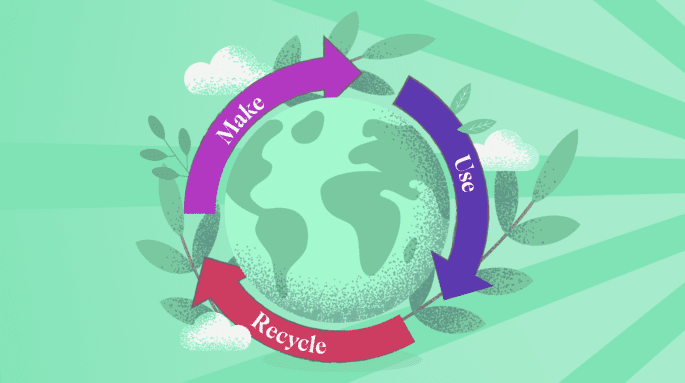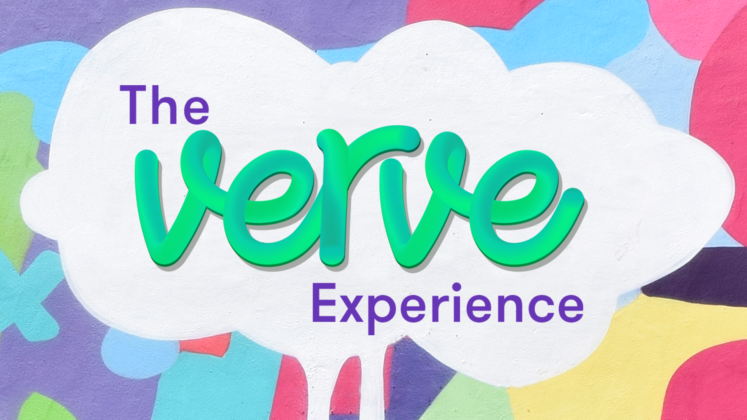Design for life: Your Brand and a Circular Economy
29/04/2022

What is Circular economy
Circular economy is a somewhat fresh take to design, make and consume.
Design for Circularity is the process where companies look to re-design products and business models to retain quality and gain longevity. This process aligns with Eco-Design and looks to prepare and minimise harmful environmental impacts linked with manufacture, use and the disposal of products.
Here’s a simple analogy on how circular economy functions, how a process can be replenished; Think of the terrarium, where it has a system that thrives by itself, when supplied with the right materials and setting. Reusing the water generated by the soil and plant’s vapour – essentially recycling water, in its clear, sunlit container. The vapour is then collected onto the walls of the vessel and trickles down to the soil. And the process continues and repeats itself.
What is the value
The value of the Circular Economy is evident through the resource efficiency, waste reduction, eco-design or reuse. It offers a framework created to eliminate waste and pollution from the beginning of a cycle. The objective is to keep products and materials at their maximum quality use, and restore that system i.e recycling, reusing, maintaining, refurbishing.
Where most of us have grown up with a reliance on a linear model — take, make, use, dispose — in our daily lives, at the expense of the environment. A circular model, on the other hand, requires waste and pollution to be designed out of products – keeping materials (aluminium, glass, and plastic) within a closed loop.
Recently there has been a shift, an appeal for large scale companies to transition to a circular economy. According to Curculeire, “In an Irish context, the EPA estimates that annually we use 100 million tonnes of materials – where implementing a 5% material improvement across the economy would represent an annual €2.32bn opportunity. Moreover, valorising waste creates opportunities for import substitution and reinforces the economic benefits of regional supply-chains to Irish companies.”
Where a circular economy can be challenging to most companies running a typically conventional business model, there are massive opportunities for those to jump on board and adapt.
Waste Age: What can design do?
The biggest way to achieve this is by dramatically changing the way products are designed. “It is clear to me that a designer’s research skills can be beneficial in this context. We can train procurement decision-makers to ask the right questions, with the goal of keeping materials in the usage loop. Designers and brands must go beyond recycling and focus on making bigger, systems-level changes to help the world move to a circular economy and ultimately reach its net-zero goals”, says Ellen MacArthur.
Now we’ll take a look at some examples!
Notpla
Sustainable packaging brand Notpla has used seaweed leftover from its own production processes to create paper that can be turned into envelopes and boxes.
Unilever
Unilever’s household cleaning brand, CIF, has reduced the amount of packaging by creating ecorefill capsules(using 70% less plastic than the original design). Still giving enough space for their branding.
Loop
On Earth Day in April 2018 Seed Phytonutrients launched “a disruptive natural, sustainable beauty collection” designed by Shabe Wolf at L’Oréal USA . This brand along with others are adopting a service that offers the delivery and collection of products in reusable packaging, through the partnering of services such as Loop. With Loop, the packaging can become a brand asset. Where some consumers would have considered the platform uninteresting are now enticed by the “cool” looking, nicely designed packaging.
BMW
BMW has used recycled and recyclable materials to create the i Vision Circular, a concept car designed in line with circular economic principles to be easily disassembled at the end of its life.
Valentino Gareri Atelier
A design house favourite of mine – Valentino Gareri Atelier revealed visuals of the Cacao Eco Village in Ecuador for locals. The renders feature 3D-printed buildings made from recycled cacao, repurposed by the farmers from the area.
Dezeen
Dezeen, a popular online design magazine ran a competition in partnership with the sustainable brand Muuto. Participants were up for the chance to win their own customised Fiber chair (recycled, injection-moulded wood-fibre shell). This is a fun way to generate awareness and boost the brand profile, a brand which embodies a “New Perspectives on Scandinavian Design” with a circular economy ethos at its core.
To sum up, the circular economy is a systems solution framework that tackles global challenges like climate change, biodiversity loss, waste, and pollution. Brands can transform all elements of the old take-make-waste system – how they manage resources, how they make and use products and what they do with the materials, once they have reached their peak.
A change in ideology from “designing for disposal is cheap” to “designing for durability is an investment”, might be what’s needed to make the move. The rise of the conscious consumer demands at the least that brands look to consider the value of transitioning, sooner rather than later, to a more healthy, sustainable way of design.
– Rita O’Brien
The Verve Experience Podcast
Verve is an agency celebrating 30 years at the top of the events, experiential and marketing industries. This podcast pulls from that wealth of experience, giving key insights from the past, tips for the future, and everything in between.
You can listen to all of The Verve Experience episodes here: https://audioboom.com/channels/5045240
Check out our Creative Services Here.
What's
Going On
Our weekly blog on the world of
brand experience, tech, events, advertising and marketing.


